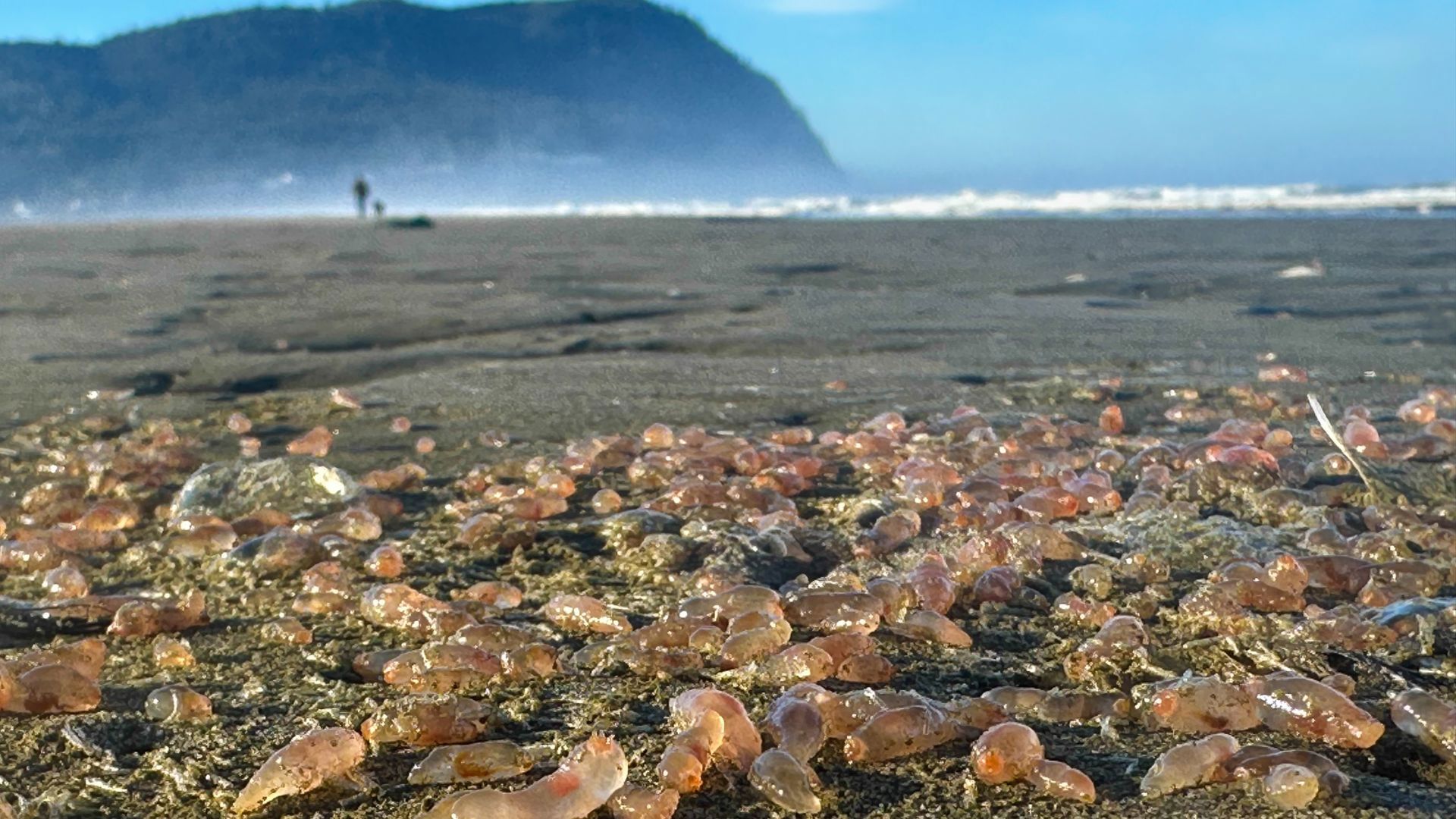Seaside, Ore. — Thousands of skin-breathing sea cucumbers were found stranded on Seaside Beach along the Oregon Coast on Wednesday, Oct. 21, 2025, according to the Seaside Aquarium. The small, gelatinous creatures, which live just beyond the surf zone, were likely dislodged by heavy surf and low tides, leaving them scattered along the shoreline.
While this type of event isn’t uncommon in autumn, the sheer number of sea cucumbers washing ashore this year has drawn attention. “While this is not an unusual occurrence this time of year, it is remarkable how many have been left stranded,” the aquarium said in a statement.
Unlike other species of sea cucumbers, these particular ones lack tube feet, giving them a worm-like appearance and preventing them from crawling back to the ocean once stranded. Despite being alive when they reach shore, they are unable to return to their natural habitat. The creatures, known for breathing through their skin, typically burrow in sand just beyond the surf for protection.
Also Read
Although the mass stranding may appear tragic, it plays a natural role in the coastal ecosystem. Over time, the sea cucumbers decompose and provide nutrients for shorebirds, crabs, and other small invertebrates living along the tide line. “They’re part of the nutrient cycle that keeps beaches healthy,” the aquarium explained.
The creatures are harmless to humans, but the Seaside Aquarium urged dog owners to prevent pets from eating them, as they can cause stomach irritation or digestive issues.
Mass strandings of marine life are not rare on Oregon beaches. In recent years, locals have also spotted other unusual ocean species washing up, such as pyrosomes—clear, tube-shaped gelatinous organisms that usually inhabit warm, tropical waters. These organisms became more frequent along the coast following a marine heat wave nicknamed “the Blob,” which brought warmer ocean temperatures to the Pacific Northwest.
In springtime, beaches are often blanketed in Velella velella, or “by-the-wind sailors,” small, purple, jellyfish-like creatures that drift on the ocean’s surface. Millions can wash ashore during years when marine heat waves occur, painting stretches of the coastline in shimmering blue and violet hues.
While the sight of thousands of stranded sea cucumbers may seem unusual to beachgoers, scientists note it’s a natural part of coastal life, shaped by tides, storms, and ocean currents. As the Seaside Aquarium emphasized, these mysterious, skin-breathing creatures are another reminder of how dynamic and interconnected Oregon’s coastal ecosystems truly are.












